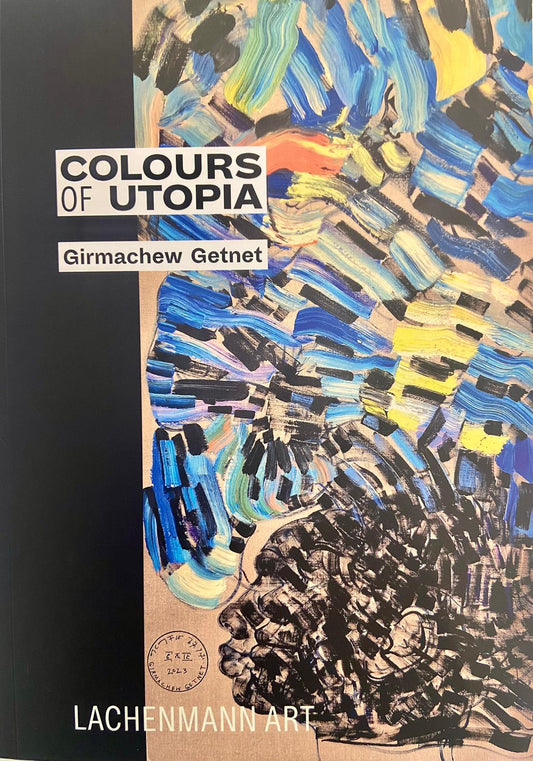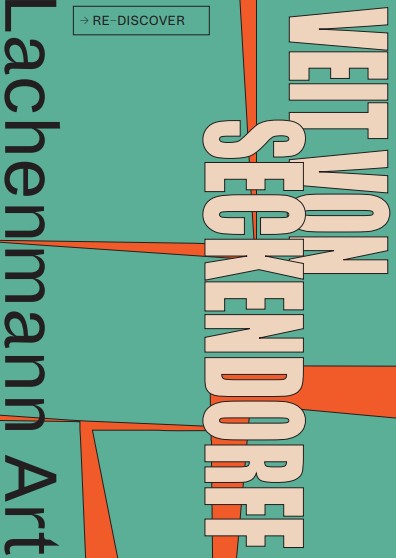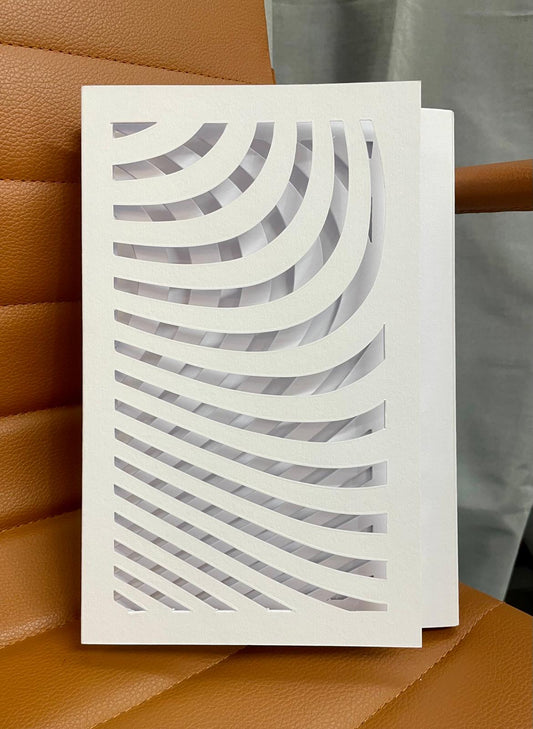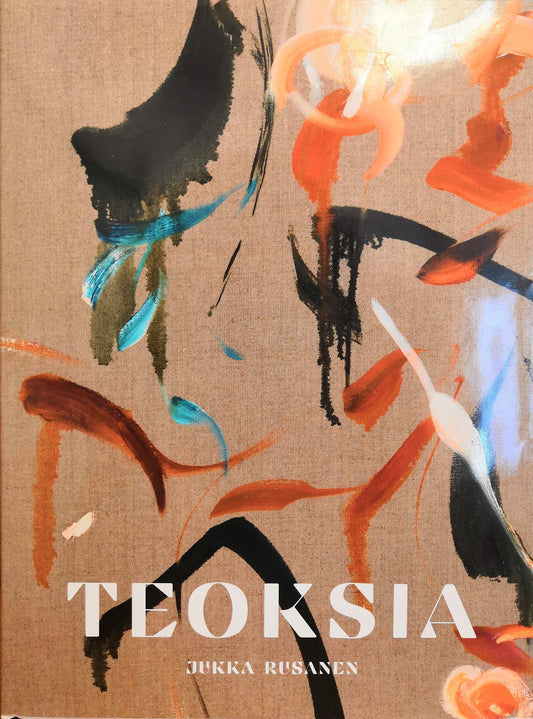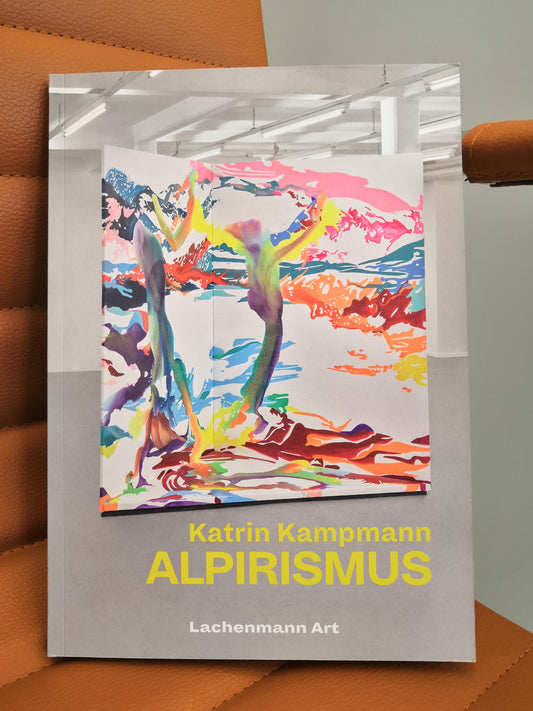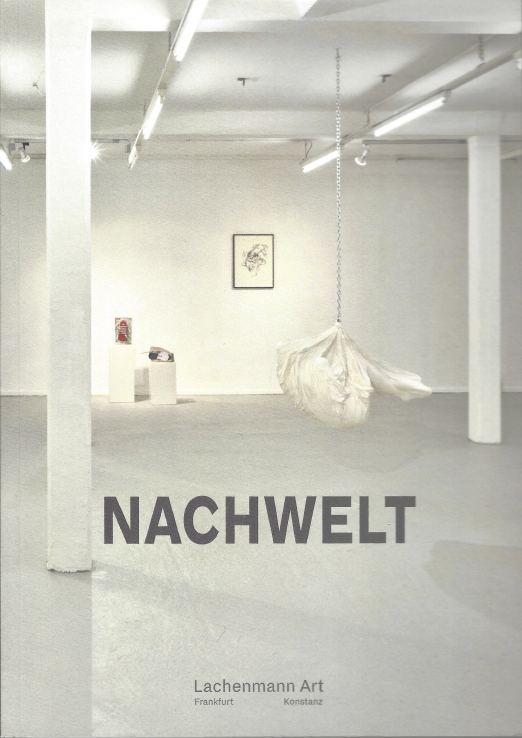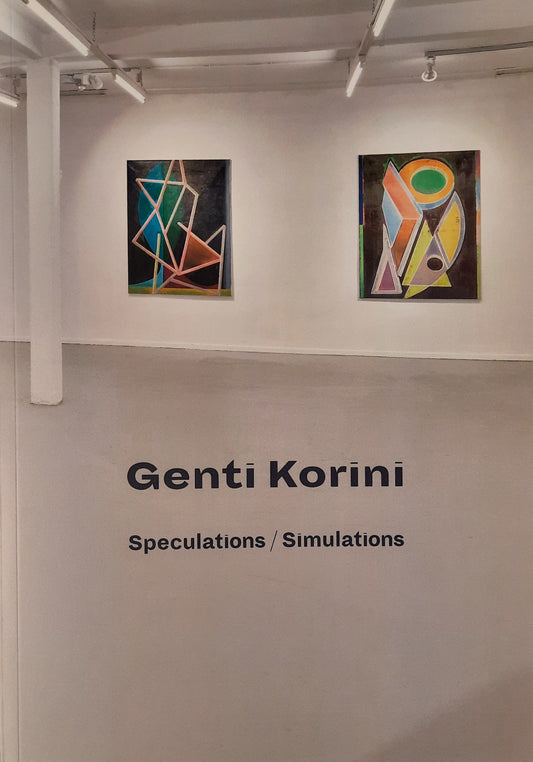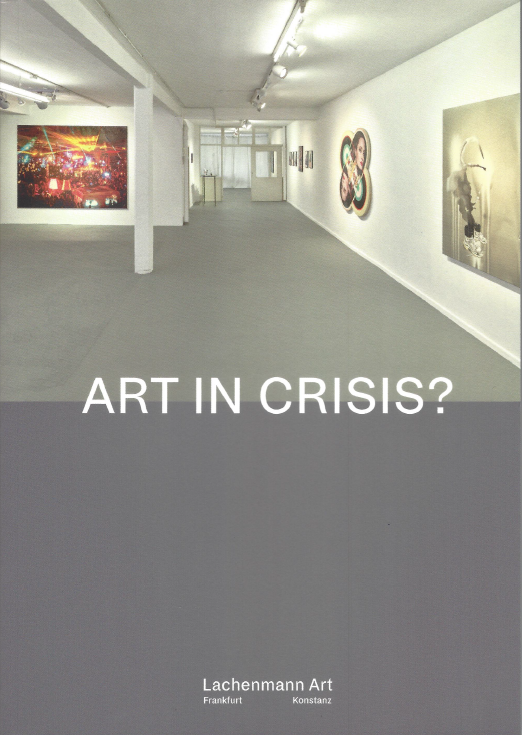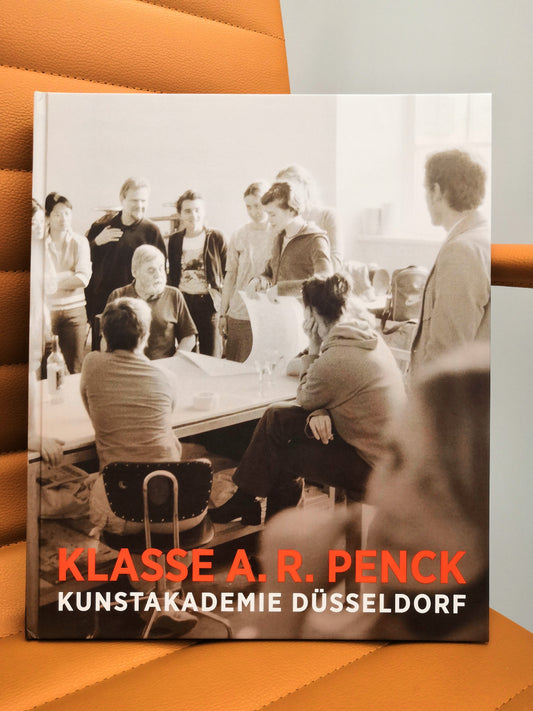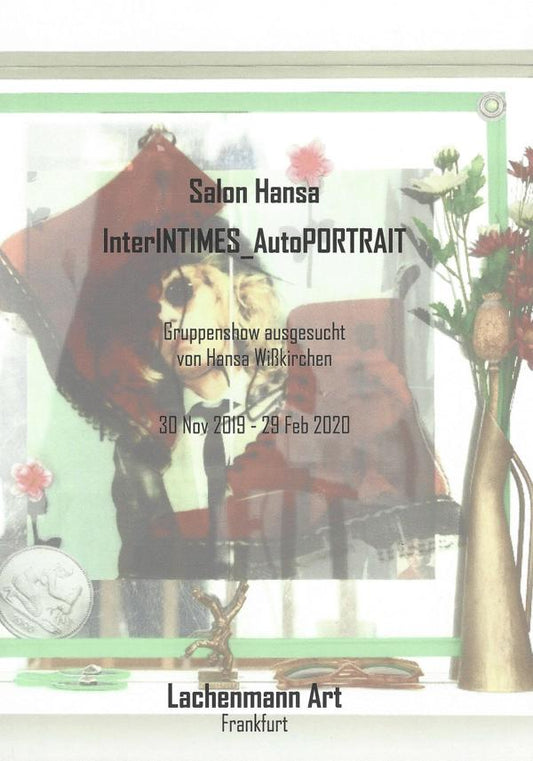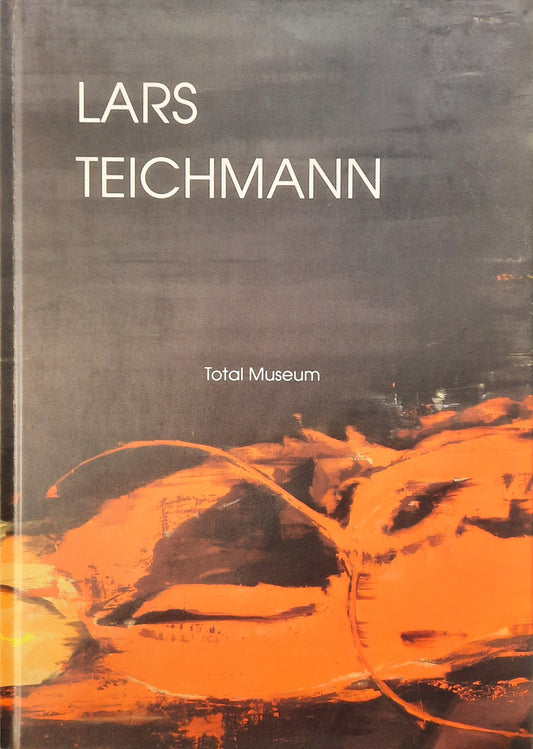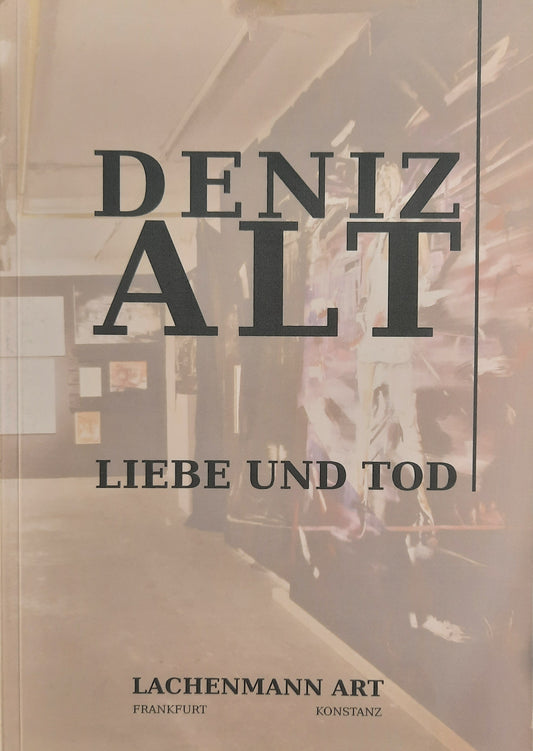Time jump
Ever since history began, in the sense of telling the past, there has also been an attempt to tell a "story of tomorrow", an attempt to explore and predict the future. This reflection on the future, which of course can never be predicted exactly, is therefore more and more a reflection of the past and present: from the Oracle of Delphi in antiquity to forecast calculations on epidemic progression in the present, it is the "know thyself" describing the current state that makes social predictions possible and meaningful. "It is particularly important [...] that this forecast should be less a prophecy than a discussion about our current choices. If the discussion leads to us making a different decision and the forecast turns out to be wrong, all the better. After all, what would be the point of forecasts if they couldn't change everything?" writes Yuval Noah Harari in his analysis of the future "Homo Deus". Likewise, (pop) culture, from dystopian and science fiction novels by George Orwell or Margaret Atwood to Roland Emmerich's Hollywood disaster porn, deals primarily with contemporary problems of a political, social or ecological nature through the medium of descriptions of the future.
The exhibition "Afterworld" sets the premise of the future after a dystopian catastrophe in which human relics and artifacts are the only evidence of our existence. The four artists in the exhibition, Franziska Klotz, Agnes Lammert, Jirka Pfahl and Ronny Szillo, reflect on this possible afterworld, but - like all narratives of the future - primarily move into the world of thought of the future through a reflection of the present.
Ronny Szillo's "Work in Progress" series shows these future human artifacts. In it, he imagines a scenario of the future in which the remains of our civilization are found. If we try to imagine past human eras through grave finds and decorations on ceramic shards, what would future generations conclude about us from cell phones, sneakers, or fidget spinners that have become fossils? In his fossils, Szillo artistically questions the "brave new" digital world, but at the same time tries to trace the topics discussed there and their independent aesthetics back to "IRL," real and, above all, tactile life.
"Work in Progress" takes the mere imprint of modern fossils further by combining non-degradable products such as plastic toothbrushes or sneakers, which will survive us users even without leaving an imprint, with ceramic and artistic artifacts to create assemblages. In particular, the exploration of classic sculptural subjects such as clay or cast materials, while consistently dealing with contemporary themes, is a fundamental feature of his work. In the series on display, Szillo collages industrial mass products such as toothbrushes, chopsticks or sneakers in concrete, with the sneaker in particular running through Szillo's work like - to stay with the archaeological image - a modern index fossil. Szillo thus follows in the tradition of the pioneers of Pop Art such as Robert Rauschenberg or Claes Oldenburg, who also use products of urban civilization in their material objects, but - in contrast to contemporaries such as Warhol or Indiana - focus their attention on the "used and discarded", as Klaus Honnef describes it. Ronny Szillo thus uses an aesthetic that has been handed down in the 20th century, which he enriches with contemporary questions and critically transfers into the 21st century.
Franziska Klotz's paintings also deal with the themes of memory and the future, as well as archaeological finds. At first glance, the work "Door" is a picture within a picture: on a door or wall, presumably in a studio, hang around a dozen portraits of dark-haired women, busts sketched on paper and head portraits en face, which are hung with adhesive tape in an interior together with landscape sketches, miniatures and a book page as a collection of ideas and source of inspiration. The women in the pictures are not contemporaries of the artist or people she imagined, but ancient Roman women who had Egyptian painters make portraits of their mummies on thin wooden panels. The picture within a picture that is initially seen turns into a picture within a picture within a picture, a portrait painted three times, a mise en abyme that has lasted 2000 years. And the people depicted have also arrived in posterity in two respects. Through their mummification they were prepared for life after death and at the same time they find themselves in an afterlife that was probably even more impossible to imagine for the ancients, 2000 years later in time.
Franziska Klotz's work is a reflection on the medium of painting and the responsibility of fine art for future generations: although none of the women depicted are known by name, and often not even the excavation site or context is known, their lifelike appearance makes them important witnesses to our idea of history and art, which not only outlives the people portrayed, but is able to carry their present into our future. The other paintings in the exhibition also address the transfer of the present into a possible future. "The Purloined Letter" shows the back of an envelope, enlarged many times over in a painterly manner, the only thing that can be identified is an illegible sender's address. Particularly in its crumpled form, the letter is also a testimony to the past and - in art history - a symbol of the transfer of what is written beyond death. The "Moor Bridge" running into a nebulous background can also be interpreted symbolically as a path to a posterity. Franziska Klotz’s figurative painting style, which allows for abstract surfaces and blurring, supports the transformative atmosphere of her subjects.
While Franziska Klotz connects the past with the present and thus designs a possible future, Jirka Pfahl works with a medium that has just arrived in the present, but which nevertheless sounds like a thing of the future in the art world. With their financial success, especially at international auctions, NFTs (non-fungible tokens) have become common knowledge in the art world since 2020. Jirka Pfahl adapts the artistic strategies that he has so far implemented in his "folds" in paper, geometrically designed compositions that are reminiscent of architectural facade elements in the building or molded stone principle, as NFTs for the digital space. The artistic question inherent in these paper works, oscillating between two and three dimensions, which deals with and questions the boundaries of sculpture and image and at the same time with the classical materiality of these, thus takes on a further, digital dimension.
The question of the "survival" of works of art as human artefacts becomes larger and more urgent when transferred to a potentially infinite medium, but at the same time it questions whether the digital form would really be superior to the analogue in the long term in the event of a dystopian catastrophe - as the thought experiment of this exhibition assumes: If the dinosaurs had had smartphones and the associated databases 70 million years ago, we would not be able to prove this, unlike their existence, which is confirmed by bone finds. And yet, within his system of order, which can vary infinitely when programmed as an algorithm, Jirka Pfahl shows the new and future possibilities within art, which, initiated by humans, can vary and grow independently.
Agnes Lammert's "Heaviness" also raises the idea of art that outlasts people. A bundle hangs from the ceiling, and at first glance it is clearly the body of a person who makes himself small, pulling his knees up to his chest. The head, back, legs and feet are evidently formed under a piece of fabric that supports the body. The folds that envelop the body's shape show what is not there, namely a person. Covering with fabric emphasizes what is underneath, concentrates on the essential and thus makes it visible. In the Catholic Church, the crucifix is covered and venerated before Easter, and the concentration on what is happening underneath is thereby maximized within the church year. In Auguste Rodin's "Monument to Balzac" the body is completely covered - or replaced - by a cloak, and even the most classic of all sculptures, the Nike of Samothrace, is pure folds in its current form, without head and arms. The absence of the body in the sculpture is at the same time the concentration on the human being and, in a potential posterity, his absence.
These contradictions determine the work of Agnes Lammert: The absence of humans in posterity meets the need to physically engage with them when looking at her works. So if art is to outlive humans, what is its value without the connection to its viewers? And: Can art even be called art without the counterpart of humans? These metaphysical ambivalences of Schrödinger's artwork in posterity become clear in the works of Agnes Lammert. They show heaviness and lightness, the different perceptions of material properties and effects, what is present and what is deliberately omitted.
The four artistic positions in the exhibition "Posterity" show, in their different approaches, the central position of humans, even in a dystopian, post-human future, and underline the humanistic credo that the universe spiritually revolves around humanity. The Anthropocene, the age of humans, is analyzed by them in the retrospective future perfect: humans will have been, what will become of their relics, what will become of art? And why are we even interested in this if there will be no witnesses to this state anyway? The distance to one's own present is made possible through the analysis of this post-apocalyptic state and contains the possibility of a reflection of humans in the present. - Sophia Pietryga
Inspired by worrying social developments of the present, the artists Agnes Lammert, Franziska Klotz, Jirka Pfahl and Ronny Szillo examine which artifacts will remain if humanity disappears. This counter-image of a positive utopia gives the viewer an insight into the current and past state of our existence and warns against existing drifts, be they of a material, natural or emotional nature. Four Leipzig artists come to Galerie Lachenmann Art Frankfurt and give us insights into their reflections and artistic implementation of the idea of a so-called posterity.
What will be left of our present in 100 or 1000 years? What artifacts will humanity leave behind and what art from it would we find? In a dystopian scenario, the artists Agnes Lammert, Franziska Klotz, Jirka Pfahl and Ronny Szillo explored what would be left of their works of art if humanity suddenly disappeared. This includes all the things that humans produce for their current use, which in turn provide insights into the state of present and past humanity.
On the lower floor of the Frankfurt gallery (350 sqm) the exhibition
›NACHWELT‹ the question of what will become of art and artistic existence in the event of a
dystopian event remains. In this scenario we look into a future
without humans, but with all the artifacts they left behind. This dystopia allows us to look at our human existence from a distance and thus better understand our current state. Now four
different artists insights into their reflection and artistic implementation
to the idea of a so-called posterity.
Jirka Pfahl’s work examines the possibilities and limitations of a
blockchain-based artwork that is based on the new digital values and
rating systems. Blockchain is a continuously expandable list of
data sets and can be continued indefinitely. The data in the hidden network of the
Jirka Pfahl brings the existing chain of computers into a visible form. His works consist of folded shapes that are spread out like a net over the entire surface. In their constant repetition and reproducibility, they trigger thoughts about infinity. This work is intended to represent the achievements of technology, which would continue to exist even in a dystopian scenario without a human population. Jirka Pfahl shows us that humans, who are themselves finite, can create infinite things. In addition to the rapid technological development, the human spirit and mind have also changed. Critical thinking is more part of the zeitgeist than ever before.
Franziska Klotz portrays teenagers whose generation has both a difficult legacy and great hope, and whose future is uncertain. The criticism of the younger generations is therefore becoming increasingly louder. Klotz takes up the demand to rethink existing conventions in her position as a painter.
Existing outdated orders lead to a bleak future, which Klotz depicts in her work Moorbrücke. The urge to break it exists simultaneously with her own inner collapse, which the artist illustrates with a crack in the glass.
Ronny Szillo's sculptures pose the playful question of what objects from our present day a future archaeologist would find. In direct comparison to historical, sensational grave finds from times gone by, Ronny Szillo creates brightly colored fossils of the future. Inspired by layers of rock that have been compressed over thousands of years and in which fossilized snails and plants can be found, the gray concrete encloses colorful sneakers, glittering cell phone cases and everyday objects such as toothbrushes. It is not hand-painted ceramic shards or ancient tools that bear witness to our civilization, but all those apparently everyday objects and artifacts that Ronny Szillo fuses into a suspicious reflection of the Anthropocene. With a critical wink, the artist turns out to be a visionary of the future who not only dares to question the multimedia structure of our time in the sense of a "brave new world," but also enters into a dialogue with art history, the nature of materials and craftsmanship. Ronny Szillo casts the aesthetics of the 21st century in concrete for posterity.
Agnes Lammert's freely hanging sculptures symbolize the heaviness of a dystopia, transience and the lightness that follows. The artist succeeds in doing this with her work "Heaviness", a fictitiously light, permeable material that caresses the shape of a body. The freely hanging sculpture, which is in constant, gentle movement, triggers curiosity and fascination in the viewer. Agnes Lammert also knows how to incorporate Kazé's inherent ambivalence between material properties and effect into her works. The temperature sensitivity of the wax material confirms it as a transient, fragile artifact of a short-lived period of time. The interplay of apparent heaviness and apparent lightness, in their mutual conditioning and contradiction, points to an uncertain future that can be questioned with the exhibition. What is occupied, what remains and what will pass away?
Installation views: Credits Eric Tschernow
Vernissage photographs and artists' portrait: Credits Daniel Beyer










































